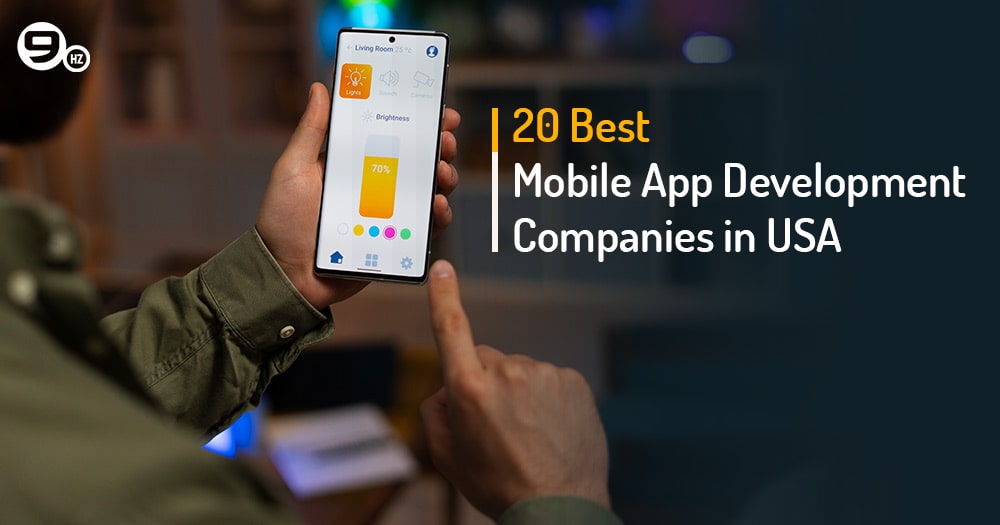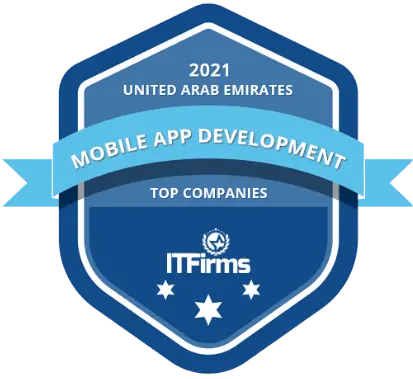The landscape for IT and software development activity is changing faster than ever. Businesses that do not efficiently scale operations and utilize talent outside their home country risk falling behind their competitors. Traditional forms of outsourcing, or developing software in-house, can be slow, expensive, and inflexible when companies are faced with rapid growth.
The Build-Operate-Transfer (BOT) model is changing how companies expand their IT capabilities. Although initially used for major infrastructure projects, BOT now allows companies to build and operate a fully functional software development team in a lower-risk manner. The contractor builds the team, runs the operations, then transfers complete ownership of the team to the client. BOT provides a way for companies to gain efficiency in operations, protect their intellectual property, and ultimately control their operations over the long term, without the upfront cost of infrastructure and human beings.
Recent research estimates the global IT outsourcing industry will exceed $525 billion by 2027, while BOT looks to be an increasing choice for companies looking to grow rapidly, while still retaining the quality of their product, in addition to some control. Companies that utilize the BOT model at this stage will most likely have a competitive advantage; initiate and have exposure to large pools of the best talent in the world, all at an accelerated time to deliver their product, while companies that wait risk not being able to catch up.
Understanding the future of BOT in IT and software development is no longer optional—it is a strategic need for companies looking to stay ahead of the curve in a world where success is determined by speed, efficiency, and control. If you are looking for development partner, The NineHertz is the leading build operate transfer services provider.
What is the BOT Model in IT and Software Development?
The Build-Operate-Transfer (BOT) model is a strategic approach for companies to establish, operate, and ultimately take complete control of a dedicated IT or software development centre. In contrast to traditional outsourcing, where the client has a limited degree of control, the BOT model is a framework where the vendor runs day-to-day operations for a defined period of time, after which ownership is transferred from the vendor to the client.
How BOT Works?
A BOT engagement unfolds in a 3-stage process:
- Build: the vendor (outsourcer) builds all the infrastructure, hires and trains an exclusive team of professionals, and the vendor sets up the workflow processes in alignment with the client’s organizational goals.
- Operate: the vendor operates the day-to-day operations, ensures quality assurance, transfers knowledge and training to the client, and gets the client ready to take ownership of the operations as soon as they are ready for the transition.
- Transfer: the client has full ownership of the processes, the team, and the intellectual property (IP), and they operate independently from the vendor.
Why Companies Prefer BOT?
One of the major advantages of the BOT model is that it has the agility of outsourcing while simultaneously providing long-term ownership of the operating model. Traditional outsourcing may result in the client saving costs in the short term, but it comes with a lack of operational complexity and ownership. The transfer of the relationship comes with a much larger investment in human capital, infrastructure, and training upon going the in-house route. In contrast, the BOT model allows the vendor to reduce waste and effectively manage the operation for the client while allowing for ownership and control of the intellectual property and operations.
For example, leveraging a BOT vendor in Poland, a fintech startup hoping to introduce a mobile banking platform in Europe can assemble a development team, oversee operations for 12 to 18 months, and then hand over complete management. With no upfront infrastructure or hiring costs, the startup receives a fully operational IT department.
BOT vs Traditional Models
| Aspect | BOT | Traditional Outsourcing | In-House Development |
|---|---|---|---|
| Control | High after transfer | Low | High |
| IP Ownership | Retained by client | Often shared | Retained by client |
| Cost | Optimized over time | Low short-term | High upfront |
| Risk | Mitigated by the vendor | Shared | High upfront |
| Setup Time | Fast | Moderate | Long |
Ultimately, the BOT model is more than just a service delivery model; it is a comprehensive approach for scaling operations, achieving operational efficiencies, and future-proofing IT capabilities.
The Evolution of BOT in the IT Industry
The Build-Operate-Transfer (BOT) model did not originate from information technology. It has been used in major infrastructure projects such as highways, power plants, and industrial facilities for years. The principle was rather elementary and yet effective: a private entity constructs and operates a facility for a set period of time before ownership is turned over to the government for management. The BOT model also allowed for sharing risk, efficiency in project and performance management, and relieving some of the financial burdens.
By the early 2000s, when IT outsourcing was becoming a global market for businesses, many business leaders recognized that a BOT could be adapted to software development and IT operations. International businesses, entering the offshore market, needed a model that could provide them with operational expertise while allowing them to control a long-term fate in the local market. BOT models would begin to bridge the benefits of effectively outsourcing while providing owners with some peace of mind of ownership.
BOT Adoption in IT
The initial adopters of BOT in IT were multinational corporations that were creating offshore development centres. Countries which became known for these arrangements were India, the Philippines, and Eastern Europe, based on a combination of highly skilled labour pools and costs. All of which made it possible for multinational corporations to sustain what was fully functional dev teams without raising the usual overhead situations related to recruiting, developing infrastructure, and ongoing management.
BOT’s journey has progressed from the traditional software outsourcing delivery model. Today it encompasses:
- Dedicated Research and Development centres, emerging technologies (AI, blockchain, and IoT)
- Cloud-based functions to facilitate remote teams and operations.
- A hybrid alternative in which BOT/managed services are combined, bringing a solution that is even more flexible.
As an example, a global e-commerce company that was establishing an AI-driven recommendation engine in India engaged a BOT vendor that created a development team that was dedicated to the client. This was achieved within 18 months, in which the BOT vendor managed the operation, transitioned knowledge to their client, and handed over full control of the operation, enabling seamless scalability of the AI solution without the client facing any operational costs or risk as a new venture.
Why BOT is Vital Today?
With the accelerating pace of the digital transformation journey, the speed, control and scalability are a formula that today’s businesses need. BOT allows companies to rapidly reach new markets while retaining IP and enjoying timely access to world-class resources. Moreover, IT industry reports suggest that BOT adoption rates increase 12-15% per annum, and organization want to find a good balance between operational risk and innovation.
The evolution of BOT underscores its shift from a basic outsourcing delivery model to a strategic growth model aligned with the new demands of the IT world.
How the BOT Model Works: Build, Operate, and Transfer Explained?
The Build-Operate-Transfer (BOT) model is a formal pathway that leads an enterprise to set up and operate IT or software development activity while limiting risk exposure. In its three distinct phases: Build, Operate, and Transfer, BOT is sure to allow for setup, operation, and transition.
1. Build Phase
The build phase is the baseline of any BOT relationship. In the build stage, the vendor:
- Set up infrastructure: build the servers, tools, technology stack, and real or virtual office to assist the client.
- Recruits and trains the team: recruits and trains developers, testers, project managers, and support staff in accordance with customer requirements.
- Implements processes: Defines workflows, reporting, and methodologies (Agile, DevOps, etc.) so teams are ready to operate.
2. Operate Phase
The vendor takes full responsibility for continuing operations after the foundation is established. Important areas of communication consist of:
- Managing development cycles, quality control, and client reporting are all part of project management and execution.
- Performance improvements: Monitoring productivity, fixing bottlenecks, and maximizing performance.
- Knowledge transfer: Gradually exposing client teams to the processes, workflows, and technology to support the team responsibly.
The Operate phase typically lasts anywhere from 12 to 24 months, exposing the client to the capabilities of the team, various processes of operation, and managerial tools along the way.
3. Transfer Phase
The transfer phase signifies the transfer of total control to the client. During this phase:
- The client completely owns the team, processes, and intellectual property.
- The vendor generally supports the client for a short period to facilitate a smooth transition of operational delivery.
- The client is completely ready to independently scale operations, and to leverage the team for more work in the future.
Key Benefits of BOT in Software Development
The BOT model represents more than a delivery model; it becomes a strategic tool that can deliver real value for businesses seeking to grow smartly, mitigate risk, and ensure control. With BOT, companies can also grow faster and operationally excel.
1. Cost Efficiency
Launching an in-house IT or software development function can be costly as companies must invest in infrastructure, hiring and training their staff. However, BOT allows businesses to spread the costs of infrastructure, staff and training across the Build and Operate phases, helping to minimize the initial costs and optimize long-term operating costs.
2. Access to Global Talent
BOT offers businesses instant access to vetted business specialists in regions such as India, Eastern Europe, and Southeast Asia, especially valuable for startups or companies introducing product lines to new markets based on a talent skills gap or high-cost hiring.
3. Operational Control & IP Protection
Unlike traditional outsourcing, BOT offers the client intellectual property and operational controls after transferring the operation to the client. Clients can establish development criteria, manage work efforts and protections in proprietary technologies, with reduced risk.
4. Faster Market Entry
BOT allows businesses to create operational units much faster than traditional hiring processes or coordinating space, utilities, and technology. It empowers businesses to develop products faster and enter new markets faster than their competitors.
5. Risk Mitigation
During the initial Build and Operate phases, the vendor takes on the initial operational risk (staff, process backups, project launch executions) for the initial phases of the BOT arrangement, eliminating as much operational impact on the client, who can focus on their strategic objectives.
6. Scalability and Flexibility
BOT models are also incredibly flexible. Teams can expand or contract to shift staffing based on project needs, integrate new technology, or implement geographic, scalable operational units, while the business retains operational control over the long term.
Tip: Consider using BOT with Agile and DevOps methodologies to generate value by producing productivity, shortening development cycles, and increasing affiliation with team members.
BOT vs Other Engagement Models
With technology and software development, companies have multiple engagement models they can choose from. The Build-Operate-Transfer (BOT) model stands out for its combination of operational control, scalability, and risk mitigation, but it’s important to understand how it compares to other popular approaches:
1. BOT vs Traditional Outsourcing
Traditional outsourcing has a company use a third-party vendor to do software development in exchange for payment. It shifts operational responsibility to a vendor and is often cost-effective, but it also typically provides only limited control, can introduce risks to intellectual property (IP), and typically does not align with a long-term strategy. The BOT model also reinforces that, at termination of the engagement, the client owns the team, the processes and the IP, so the client retains operational control and stability for the long term.
2. BOT vs Managed Services
Managed Services consists of the vendor providing ongoing support, including IT support and operational management, as stipulated in the SLA. The client provides little oversight and relies on the vendor to take care of daily oversight in accordance with day-to-day responsibilities. Similarly, BOT does not involve client oversight of day-to-day operations, but at the conclusion of the defined time period, the client has a dedicated team and process and will not rely on the vendor for continuity.
3. BOT vs Joint Ventures
In a joint venture (JV), two businesses combine their resources and funds to form a new company. JVs give both partners access to markets, resources, and finance, but they usually share control, which can impede decision-making. BOT is an engagement model that permits complete discretion of ownership of the team and business at the definition of the project duration and offers a definitive transfer of control after the allotted time.
Comparison Table:
| Features | BOT | Traditional Outsourcing | Managed Services | Joint Ventures |
|---|---|---|---|---|
| Ownership | Full after transfer | Vendor | Vendor | Shared |
| Control | High post-transfer | Low | Medium | Shared |
| Risk | Low initial, vendor-managed | Shared | Shared | High |
| Cost | Optimized | Low short-term | Fixed | High |
| Talent Access | Dedicated | Shared | Limited | Shared |
| Flexibilty | High | Medium | Low | Medium |
Why BOT Stands Out?
The Build-Operate-Transfer (BOT) model is particularly effective for organizations seeking to scale internationally by establishing dedicated research and development or development centres while safeguarding their intellectual property. The model leverages outsourcing for operational efficiencies, mixed with the strategic control a team may have in-house. For organizations that want to establish long-term growth while preserving quality and decision-making control, the BOT model may be the model of choice.
When a business chooses BOT over other engagement models, it generally secures its project delivery timelines across its global engagements, provides downside protection for its IT operations, and builds a multiplier workforce that is actively skillset aligned with its organization’s related corporate goals.
Challenges and Risks in Implementing BOT
Organizations should be aware of the advantages that come with Build-Operate-Transfer (BOT) engagement models, but it is important to understand that there are risks associated with BOT. Businesses should understand the potential risks and should also strategize in advance to make the transition smoother and maintain ongoing operations effectively.
1. Legal and Regulatory Hurdles
Entering into a country or region means you will need to be aware of local labour laws, tax regulations, and IP protections. Non-compliance through the usage of unskilled labour, tax evasion, and/or IP theft can have dire consequences such as fines, shifting timelines, and/or litigation.
Tip: Conduct a diligent legal audit and build a partnership with a vendor who has a history of experience with international compliance to minimize exposure.
2. Cultural and Communication Gaps
BOT may involve offshore teams, nearshore teams, or a combination of both, where teams that may speak a different language will be communicating with each other as part of their development effort. Any differences in culture and geographic distance may generate communication issues. Differences in expectations, work ethic, and/or communication protocol may impact productivity.
Tip: Implement structured communication plans, regular status updates, and cultural sensitivity training to bridge gaps effectively.
3. Operational Dependency on the Vendor
During the Build and Operate phases, businesses put considerable weight on the vendor to ensure the team’s performance, lead the execution of all process-oriented tasks, and accept responsibility for the technology that has been deployed. If the vendor mismanages the Build or Operate phase, it can affect the success of the project.
4. Post-Transfer Challenges
To add another layer of complexity, even once ownership has been fully transferred, companies may continue to have trouble retaining staff, retaining knowledge about the process, or transferring the process. In this case, a poorly managed transfer can lead to operational disruption.
5. Technology and Process Integration
The integration of the BOT team with existing tools, systems, or workflows may add another layer of complexity for companies with legacy IT infrastructure. If the systems are not aligned with existing work workflows, productivity will be reduced, and deliveries will be delayed.
Tip: Ensure early-stage assessment of technology compatibility and implement standardized processes and tools across teams.
The Future of BOT in IT and Software Development
As companies embrace sustainable digital transformation, the Build-Operate-Transfer (BOT) model is becoming more important in IT organizations and software development. Companies recognize that enterprises need to increase sustainable velocity through efficiencies, while retaining control and access to global talent as they scale efficiently and build for the future.
1. Integration with AI and Automation
The emergence of artificial intelligence (AI), machine learning, and robotic process automation (RPA) is transforming software development workflows. BOT teams are increasingly utilizing tools driven by AI for project management, testing, code reviews, and deployments, increasing productivity and decreasing human error. Businesses that integrate AI into their BOT will have a competitive advantage in speed and quality.
2. Cloud-Native and Remote Operations
Cloud computing allows BOT teams to work remotely and efficiently without major physical resources. Organizations can scale with ease across geographies and elevate productivity and talent access globally. The combination of BOT with cloud-native technologies means a flexible, scalable, and cost-effective development approach.
3. Emergence of Global BOT Hubs
Countries like India, Poland, Vietnam, and the Philippines are emerging as BOT accelerator hubs, where skilled talent, favourable economies of scale, and business-friendly laws prevail. These countries enable companies to create dedicated development centres quickly and effectively.
4. Hybrid Work Models
The embrace of hybrid and remote work increases the prevalence of BOT. Managing distributed teams is now seamless in combining on-site and remote while ensuring knowledge transfer and process alignment.
5. Strategic Importance for 2030 and Beyond
According to forecasts, by 2030, Build-Operate-Transfer (BOT) will combine with AI, cloud-native development, and nearshore/offshore collaboration to become a base model for organizations with global competitive reach. Those adopting BOT now will undoubtedly be positioned to scale innovation, reduce costs, and maintain control over technology assets.
How Companies Like The NineHertz Can Help?
To implement the Build-Operate-Transfer (BOT) model, companies should consider strategic planning, operational capabilities, and deep domain knowledge. Having experienced IT partners like The NineHertz will assist companies with establishing, managing, and scaling software development teams seamlessly.
1. End-to-End BOT Setup
The NineHertz will assist you in the full-cycle before, during and after the project, Build-Operate-Transfer (BOT) process is implemented, which involves building teams, departments, infrastructures, and managing the operations itself with the intent of transferring ownership. Businesses can rely on expert guidance to recruit skilled developers, implement Agile and DevOps processes, and set up cloud-based or on-premise infrastructure, ensuring the BOT unit is fully operational from day one.
2. Operational Excellence
When you transition to the Operate phase, The NineHertz will oversee day-to-day development, providing project management support, quality assurance and knowledge transfer for your team. Teams of talented individual employees, collaborators and contractors will utilize cutting-edge tools and best practices to optimize for output, impact, and smooth quality operations with the intention of transitioning all client Programs and Projects for final handover management.
3. Knowledge Transfer and Handover
When the time to transfer arrives, The NineHertz will work with you to conduct a smooth hand-off of the team, processes, and intellectual property. Clients can maintain full operational control, with minimal disruption after transferring, as a result of documenting, training, and continual support.
4. Domain Expertise Across Industries
The NineHertz has depth and breadth across healthcare, fintech, e-commerce, and enterprise software development, where clients can use the industry knowledge in developing BOT projects. The NineHertz ensures that businesses are not only constructing a rightful team but accelerating innovation to market faster, while navigating phased deployment strategies with commercial agreements.
Why Partner with The NineHertz?
- Demonstrated expertise in offshore development centres and BOT.
- The capacity to deliver committed, client-focused teams.
- Proficiency with cloud, AI, DevOps, and Agile technologies.
- Strong emphasis on operational management, IP protection, and knowledge transfer.
Businesses may grow effectively, lower operational risk, implement the BOT model with confidence, and obtain a sustained competitive edge in software development by collaborating with The NineHertz.
Conclusion
The BOT model in IT & software development has become a game-changer for various organizations, providing operational control, cost efficiency, and scalability. The BOT model not only allows businesses to build and transfer fully functional teams, but also allows businesses to gain market access, protect IP and minimize operational risk.
With AI, cloud, and hybrid work environments changing the development environment, we can only expect the model to become increasingly relevant. Businesses adopting the BOT model today will only help drive innovation, optimize operations, and maintain the organization’s competitive advantage.
Choosing someone like The NineHertz, businesses will set themselves up to maximize BOT model engagements and build a scalable, high-performing, and future-proof IT unit. The model is no longer a commodity thinking; it is a necessary intelligent approach to succeed and thrive in a technology-centric world.
FAQs
1. What is the BOT model in IT and software development?
This is the Build-Operate-Transfer model, where a vendor establishes, manages, and eventually transfers a complete, fully functional IT or development unit, along with the team, to the client.
2. How is BOT different from traditional outsourcing?
In contrast to outsourcing, build-operate-transfer provides the client with control over the long term, ownership of intellectual property, and a dedicated team upon transfer.
3. What are the key benefits of BOT?
Build-operate-transfer provides cost savings, access to global talent, faster time to market, and complete operational control.
4. Is BOT suitable for startups and SMEs?
Yes, build-operate-transfer allows startups and small to medium enterprises to scale without large capital investments upfront.












